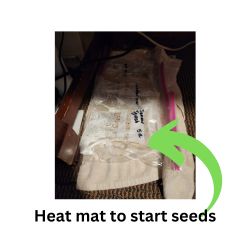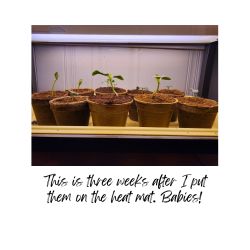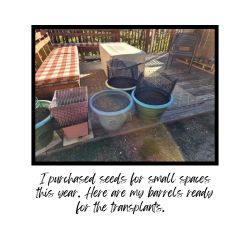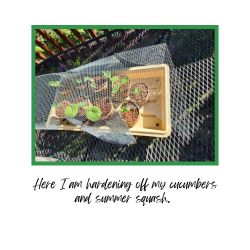High Altitude Gardening
I have been an amateur gardener for over 15 years, having gardened in Milwaukee, the suburbs of Chicago, Houston, Texas, and now Estes Park, Colorado. Each of these places presents unique challenges when it comes to getting the best out of your garden, especially at high altitude.
Here are a few unique challenges with high altitude gardening:
Short Growing Season
In Estes Park, we have, on average, only 90 days to grow our vegetables. While others at lower elevations are already getting their hands in the dirt, we’re still planning. An interesting fact: for every 1,000 feet (300 m) increase in elevation, the temperature drops by an average of 3.5°F (2°C). Timing and planning are everything.
Cool Temperatures
Summer night temperatures can be refreshing for us, but some heat-loving plants may struggle. It’s essential to consider what plants will give you the best yield and what you like to eat. I start seeds indoors because of our short outdoor growing season. A heat mat for starter seeds is crucial as it keeps them at a consistent temperature, which can fluctuate in your home. Soak a paper towel with water, wring it out, add your seeds, sprinkle lightly with cinnamon, and place in a plastic Ziplock bag on the heat mat. In 7-10 days, they’ll be ready to pot under a grow light. Giving your plants the best start indoors ensures they’ll thrive outdoors.

Intense Sunlight and Hail
The thinner air at high altitude means the sun is more intense, which can scorch some plants. I use a hail cloth year-round for filtered sunlight. Hail is also a common issue in the mountains, especially in spring and early summer, with sizes ranging from peas to softballs. A hail cloth protects young plants from damage.
Dry Air and Strong Winds
Mountains and strong winds go hand in hand. It can be calm in the morning and windy in the afternoon. Support your plants with stakes and cages to withstand high winds. Dry air accompanies the wind, making watering crucial. In peak growing season, water in the morning and use a drip system in the late afternoon to keep plants hydrated without risking sunburn from hose watering.
Animals
High-altitude mountains are home to deer, elk, voles, ground squirrels, chipmunks, prairie dogs, birds, and more. The biggest threat to young plants is elk and deer, which see young squash plants as a treat. Cages not only protect from wind but also from animals eager to feast on your vegetables. While I’m all for sharing, I believe I should get the first bite.
This blog post will be updated as I go through this year of setting up my garden, the plants I’ve decided to grow, and lots of pictures to show that you can do it too.
Update : This is three weeks since I put the seeds on the heat mat. After about 7-10 days they went into soil, under a lamp for some artificial sun. The sun takes awhile to get to my cabin, so bulbs it is for me.

Here is where I have started to gather up my barrels for the new transplants once the temps at night is about 55, usually around the first week of June.

As I was waiting for the temps to warm up, I started to hardening off. Hardening off the seedling it’s not just about the amount of time, but gradually increasing the amount of time seedlings spend outdoors over a period of days or weeks. This helps them adjust to the different conditions they’ll experience outdoors, like sunlight, wind, and temperature fluctuations, making them stronger and less likely to go into shock when transplanted.

I will keep updating you on the progress. I have planted my first set of vegetable seeds at the community garden. I work both, the property at Rustic River Cabins and the community garden so I can experiment at this altitude. This year, 2024, I am experimenting with the small container squash and cucumbers. Keeping the critters out at RRC, is always a challenge. If you see me yelling at the chipmunks, you know why. heheh.

